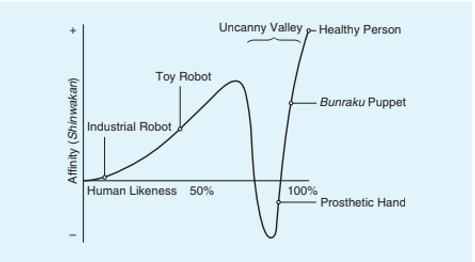About the Author

This website represents the culmination of my time at the University of Texas at Austin receiving my Masters in Media Studies.
I first began to take an interest in machine-human interactions and relationships in Dr. Sharon Strover's "Communication, Technology, and Culture" class, where I was first introduced to the digital influencer Lil Miquela. Miquela was the start of my thinking about the ways that we integrate machines and technology into our daily lives. In following this line of enquiry, I found myself contemplating the way that in taking a recuperative stance toward technology, and in looking at our images of machines and tech through a queer lens, can reveal new modes of being in the world. I found myself transfixed by the ways that these creations are frequently the backdrop that allow humans a way to imagine a different world and a different self. More often than not, these imaginings take on a distinctly counter-hegemonic sensibility.
Halfway through “Communication, Technology, and Culture” (Spring 2020), the COVID-19 pandemic forced us into remote online courses. I’m writing this section on the one-year anniversary of the World Health Organization declaring a worldwide pandemic. Since then, I’ve completed the majority of my Masters remotely.

posts are replete with current slang and pop culture references. As Hayles states, “In the posthuman, there are no essential differences or absolute demarcations between bodily existence and computer simulation…robot teleology and human goals” (Hayles 3). On the platform, Miquela behaves as a human, as well as pushing the narrative that she is inhabiting our world as well. This narrative is further supported by her consistent geotags in a number of hotspot locations in LA. She has goals as well, just like us. She desires for success, love, happiness. As a “condensed image of both imagination and material reality”, Miquela presents interesting issues with classification (Haraway 150). How is she to be classified?
The Uncanny Nature of Lil Miquela
While Miquela doesn’t seem to “evoke terror” (Hayles 4) in the strictest sense, she does inspire strong reactions drawing references to Masahiro Mori’s “Uncanny Valley.” The uncanny valley is a graph of the “proposed relation between the human likeness of an entity, and the perceiver’s affinity for it” (Mori et al.). It depicts the relationship between how human a non-human object looks and people’s comfort with it. In my own experience, one undergoes the same experience in realizing that Miquela is not real. At first glance, (while I was in
class), I thought she was real. Upon closer inspection I realized that she wasn’t, and I found myself in that strange liminal space of deeply uncomfortable but unable to look away. However, the pleasure that I derive from Miquela stems from the ability to follow her life on Instagram. I, along with nearly 3 million others, lose myself in her narrative and her ability to speak to us on Instagram in such a familiar way. She doesn’t speak like one might think a robot would, nor does she behave like one. In fact, her

Mori's "Uncanny Valley"
She isn't real, and she isn't a robot in the physical sense. At the very least she's a narrative that accompanies an image. While this may be the case, what of the clothes she wears? They are available for purchase, and she’s even done a few collaborations with specific design houses. She also interacts with people we know are definitely "of this world." Yet upon being situated with her image, they become part of her world. How do we come to terms with the “no-mans land” Miquela seemingly inhabits?
 Evading a Posthuman Definition |
|---|
 Unreal and Verified |
 Back to Theoretical Concerns |

